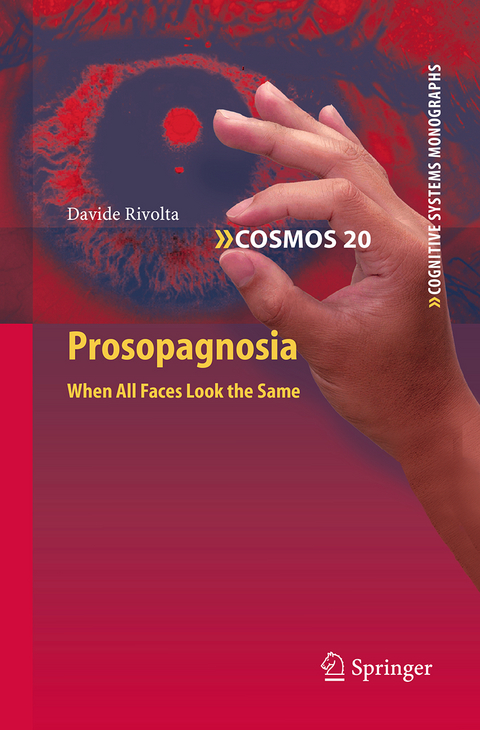
Prosopagnosia
When all faces look the same
Seiten
2016
|
1. Softcover reprint of the original 1st ed. 2014
Springer Berlin (Verlag)
978-3-662-52393-3 (ISBN)
Springer Berlin (Verlag)
978-3-662-52393-3 (ISBN)
This compact, yet comprehensive account of the cognitive and neural mechanisms of human face recognition covers the key neuroimaging techniques for investigating the brain and the clinical and neural features of prosopagnosia, the inability to recognize faces.
This book provides readers with a simplified and comprehensive account of the cognitive and neural bases of face perception in humans. Faces are ubiquitous in our environment and we rely on them during social interactions. The human face processing system allows us to extract information about the identity, gender, age, mood, race, attractiveness and approachability of other people in about a fraction of a second, just by glancing at their faces. By introducing readers to the most relevant research on face recognition, this book seeks to answer the questions: "Why are humans so fast at recognizing faces?", "Why are humans so efficient at recognizing faces?", "Do faces represent a particular category for the human visual system?", What makes face perception in humans so special?, "Can our face recognition system fail"?. This book presents the author's findings on face perception during his research studies on both normal subjects and subjects with prosopagnosia, a neurological disorder characterized by the inability to recognize faces. The book describes two known forms of prosopagnosia: acquired prosopagnosia, which is the result of a brain lesion, and congenital prosopagnosia, which refers to a lifelong, developmental impairment of face recognition. Written in a comprehensive and accessible style, this book addresses both experts (cognitive scientists, psychologists, neuroscientists and computer scientists) and the general public, and aims at raising awareness for a debilitating face recognition disorder, such as prosopagnosia, which is often ignored or misdiagnosed as autism, with serious consequences for the affected persons and their families.
This book provides readers with a simplified and comprehensive account of the cognitive and neural bases of face perception in humans. Faces are ubiquitous in our environment and we rely on them during social interactions. The human face processing system allows us to extract information about the identity, gender, age, mood, race, attractiveness and approachability of other people in about a fraction of a second, just by glancing at their faces. By introducing readers to the most relevant research on face recognition, this book seeks to answer the questions: "Why are humans so fast at recognizing faces?", "Why are humans so efficient at recognizing faces?", "Do faces represent a particular category for the human visual system?", What makes face perception in humans so special?, "Can our face recognition system fail"?. This book presents the author's findings on face perception during his research studies on both normal subjects and subjects with prosopagnosia, a neurological disorder characterized by the inability to recognize faces. The book describes two known forms of prosopagnosia: acquired prosopagnosia, which is the result of a brain lesion, and congenital prosopagnosia, which refers to a lifelong, developmental impairment of face recognition. Written in a comprehensive and accessible style, this book addresses both experts (cognitive scientists, psychologists, neuroscientists and computer scientists) and the general public, and aims at raising awareness for a debilitating face recognition disorder, such as prosopagnosia, which is often ignored or misdiagnosed as autism, with serious consequences for the affected persons and their families.
Cognitive Science: History, Techniques and Methodology.- Cognitive and neural aspects of face processing.- Prosopagnosia: The inability to recognize faces.- Can I recognize faces without knowing it? Evidence of covert face recognition in prosopagnosia.- Stories from people who share their lives with congenital prosopagnosia.
| Erscheinungsdatum | 02.09.2016 |
|---|---|
| Reihe/Serie | Cognitive Systems Monographs |
| Zusatzinfo | XII, 95 p. 30 illus., 1 illus. in color. |
| Verlagsort | Berlin |
| Sprache | englisch |
| Maße | 155 x 235 mm |
| Themenwelt | Sachbuch/Ratgeber ► Gesundheit / Leben / Psychologie ► Psychologie |
| Geisteswissenschaften ► Psychologie ► Allgemeines / Lexika | |
| Informatik ► Theorie / Studium ► Künstliche Intelligenz / Robotik | |
| Naturwissenschaften ► Biologie ► Humanbiologie | |
| Schlagworte | Acquired prosopagnosia • Artificial Intelligence • artificial intelligence (incl. robotics) • Cognitive and neural aspects of face processing • Congenital prosopagnosia • Engineering • Face blindness • Face recognition research • Facial agnosia • Neurosciences • popular psychology • Popular Science in Psychology • Robotics |
| ISBN-10 | 3-662-52393-0 / 3662523930 |
| ISBN-13 | 978-3-662-52393-3 / 9783662523933 |
| Zustand | Neuware |
| Haben Sie eine Frage zum Produkt? |
Mehr entdecken
aus dem Bereich
aus dem Bereich
Buch | Softcover (2024)
REDLINE (Verlag)
20,00 €
Eine kurze Geschichte der Informationsnetzwerke von der Steinzeit bis …
Buch | Hardcover (2024)
Penguin (Verlag)
28,00 €


